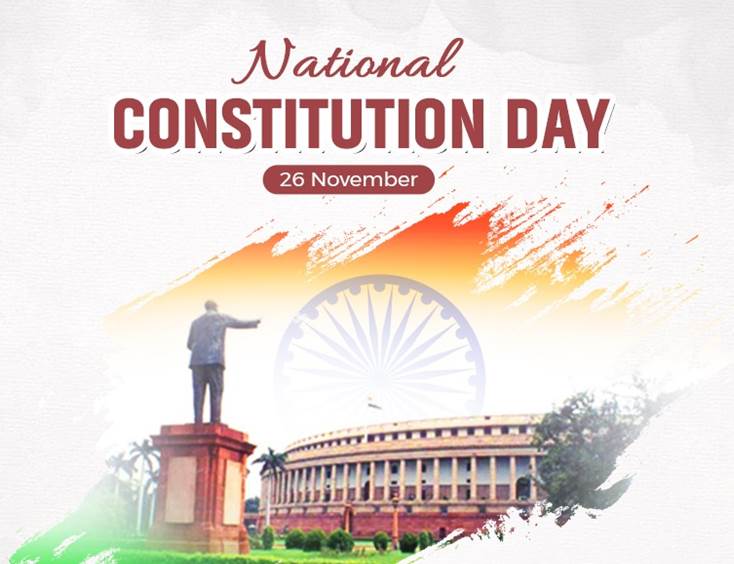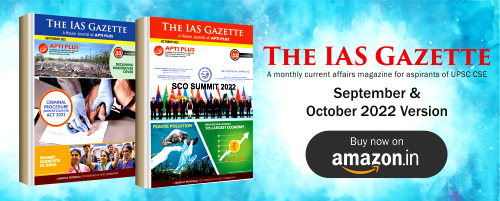Description

Copyright infringement not intended
In News
- The Indian Prime Minister Shri Narendra Modi participated in the Constitution Day celebrations in the Supreme Court on 26th November 2022.
- 26th November has been celebrated as Constitution Day since 2015, to mark the adoption of the Indian Constitution by the National Constituent Assembly in 1949.
- On the occasion, the Prime Minister has launched various new initiatives under the e-court project to provide services to litigants, lawyers and the judiciary through ICT enablement of courts.
- The Prime Minister also launched various initiatives such as; Virtual Justice Clock, JustIS mobile App 2.0, Digital court and S3WaaS Websites.
- Virtual Justice Clock to exhibit vital statistics of the justice delivery system at the Court level giving the details of the cases instituted, cases disposed and pendency of cases on a day/week/month basis at the Court level.
- The public can access the Virtual Justice Clock of any court establishment on the District Court’s website.
- ‘JustIS’ Mobile App 2.0 is a tool available to judicial officers for effective court and case management by monitoring the pendency and disposal of cases.
- Digital court to make court records available to the judge in digitised form to enable the transition to Paperless Courts.
- S3WaaS Websites to generate, configure, deploy and manage websites for publishing specified information and services related to district judiciary.
- S3WaaS is a cloud service developed for government entities to generate Secure, Scalable & Sugamya (Accessible) websites. It is multilingual, citizen-friendly and divyang friendly.
Indian Constitution
- Constituent Assembly was formed in December 1946. Between December 1946 and November 1949, the Constituent Assembly drafted a constitution for independent India.
- Each of the provisions of the future constitution was discussed in great detail and there was a sincere effort to compromise and reach an agreement through consensus.
- Significance of the Indian Constitution
- It lays out certain ideals that form the basis of the kind of country that we as citizens aspire to live in.
- The constitution serves us as a set of rules and principles that all persons in a country can agree upon as the basis of how they want the country to be governed.
- It defines the nature of a country’s political system.
- It plays a crucial role in laying out certain important guidelines that govern decision-making within societies.
- It lays down rules that guard against this misuse of authority by our political leaders.
- It ensures that a dominant group does not use its power against other, less powerful people or groups.
- It contains rules that ensure that minorities are not excluded from anything that is routinely available to the majority.

Features of the Indian Constitution
- The constitution of India is the lengthiest of all the written constitutions of the world.
- Blend of Rigidity and Flexibility; the constitution of India is neither rigid nor flexible, but a synthesis of both. Article 368 provides for two types of amendments:
- Federal System with Unitary Bias; the constitution of India establishes a federal system of Government: 2 Governments, a division of powers, a written constitution, the supremacy of the constitution, the rigidity of the constitution, an independent judiciary and bicameralism.
- Parliamentary Form of Government; The parliamentary system is based on the principle of cooperation and coordination between the legislative and executive organs while the presidential system is based on the doctrine of separation of powers between the two organs. The features of parliamentary government in India are
- Presence of nominal and real executives
- Majority party rule
- Collective responsibility of the executive to the legislature
- Membership of the ministers in the legislature
- The leadership of the Prime Minister or the Chief Minister
- Dissolution of the Lower House (Lok Sabha or Assembly)
- Integrated and Independent Judiciary; the Supreme Court stands at the top of the integrated judicial system in the country. Below it, there are high courts at the state level. The constitution has made various provisions to ensure independence;
- Security of tenure of the judges.
- Fixed service conditions for the judges.
- All the expenses of the Supreme Court are charged to the Consolidated Fund of India.
- Prohibition on the discussion on the conduct of judges in the legislatures.
- Ban on practice after retirement.
- The power to punish for its contempt is vested in the Supreme Court.
- Separation of the judiciary from the executive, and so on.
- Fundamental Rights: Part III of the Indian Constitution guarantees six fundamental rights to all citizens:
- Right to Equality (Articles 14–18).
- Right to Freedom (Articles 19–22).
- Right against Exploitation (Articles 23–24).
- Right to Freedom of Religion (Articles 25–28).
- Cultural and Educational Rights (Articles 29–30).
- Right to The constitutional Remedies (Article 32).
- Directive Principles of State Policy; The constitution declares that ‘these principles are fundamental in the governance of the country and it shall be the duty of the state to apply these principles in making laws’.
- Fundamental Duties, Universal Adult Franchise, Single Citizenship, etc.

Conclusion: During the freedom struggle, the nationalists devoted a great deal of time to imagining and planning what a free India would be like. After independence, while drafting the Indian Constitution they tried to balance all concerns with their commitment to transforming independent India into a strong, democratic society.
https://pib.gov.in/PressReleasePage.aspx?PRID=1878804
https://t.me/+hJqMV1O0se03Njk9















